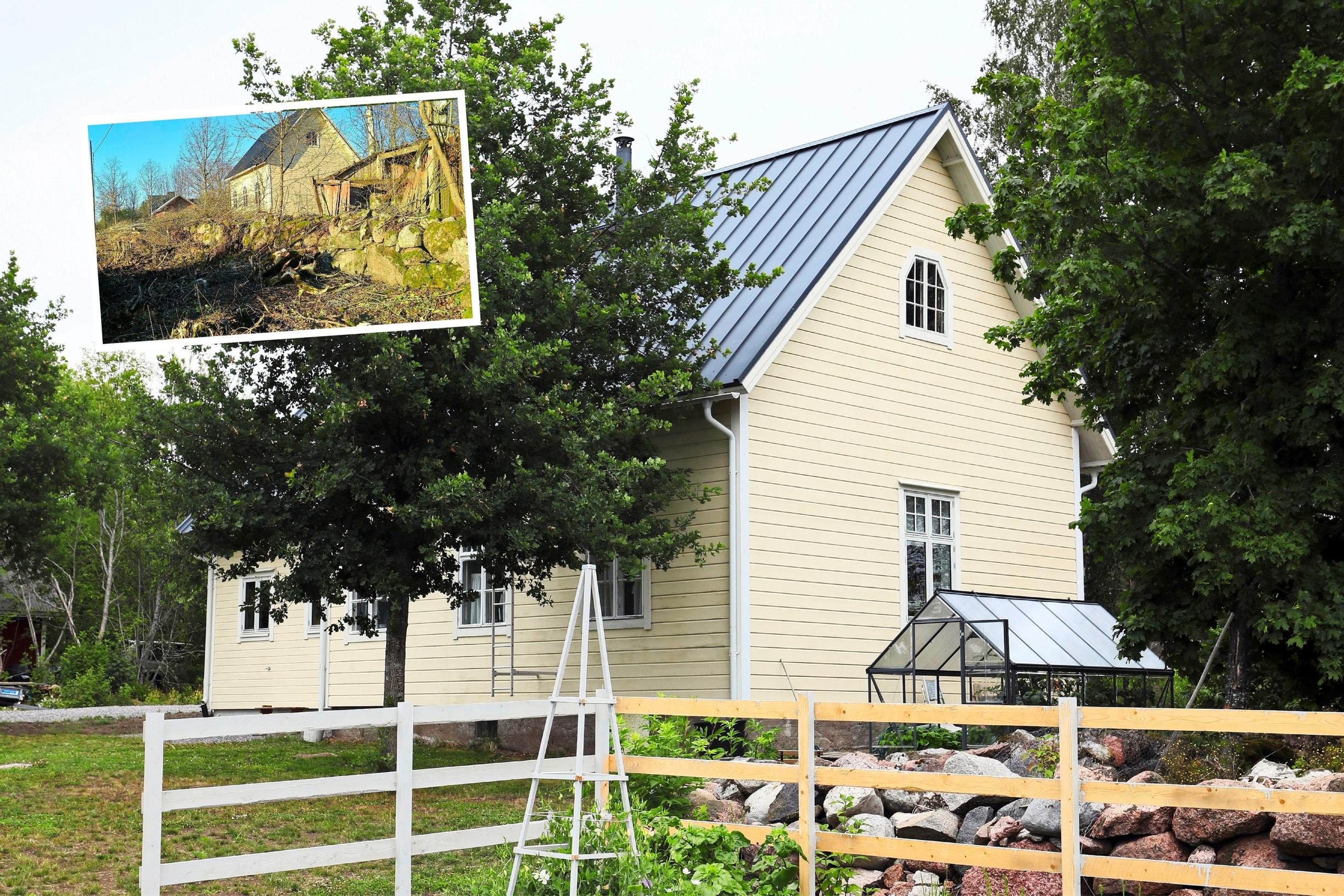
Pastor and teacher transform prayerhouse into an inviting home—“Our goal was to preserve the original atmosphere”
The 1930s prayerhouse in Porvoo, Finland, was originally constructed through the villagers’ collective volunteer efforts. In the renovation, it received a modern extension and a new life as Carina and Roger’s home. Now, where the altar once stood, there’s a window, and in place of church pews, a comfortable sofa set.
The house was barely visible from the road, hidden behind bushes. On the way to their cottage, Carina and Roger Andersson would pass the Seitlahti prayerhouse, which seemed abandoned. The charming building piqued their interest.
“We started to wonder who owned the house and what the owner’s plans were for its future,” Carina recalls.
The couple, who had lived in Vaasa for a long time, had returned to Porvoo, where Roger's family roots are, in 2019.
“We were searching for a new home with an open mind. A plot of land or a fully renovated house would have suited us equally.”
Their previous home had been a 19th-century log house in Ostrobothnia. The couple had moved the house next to the Stundars open-air museum in Mustasaari. Through that project, they became quite familiar with restoring old buildings. After their children moved out, the large log building was too big for just the two of them.
“The owner of the prayerhouse heard we were looking for a home and offered us this opportunity.”
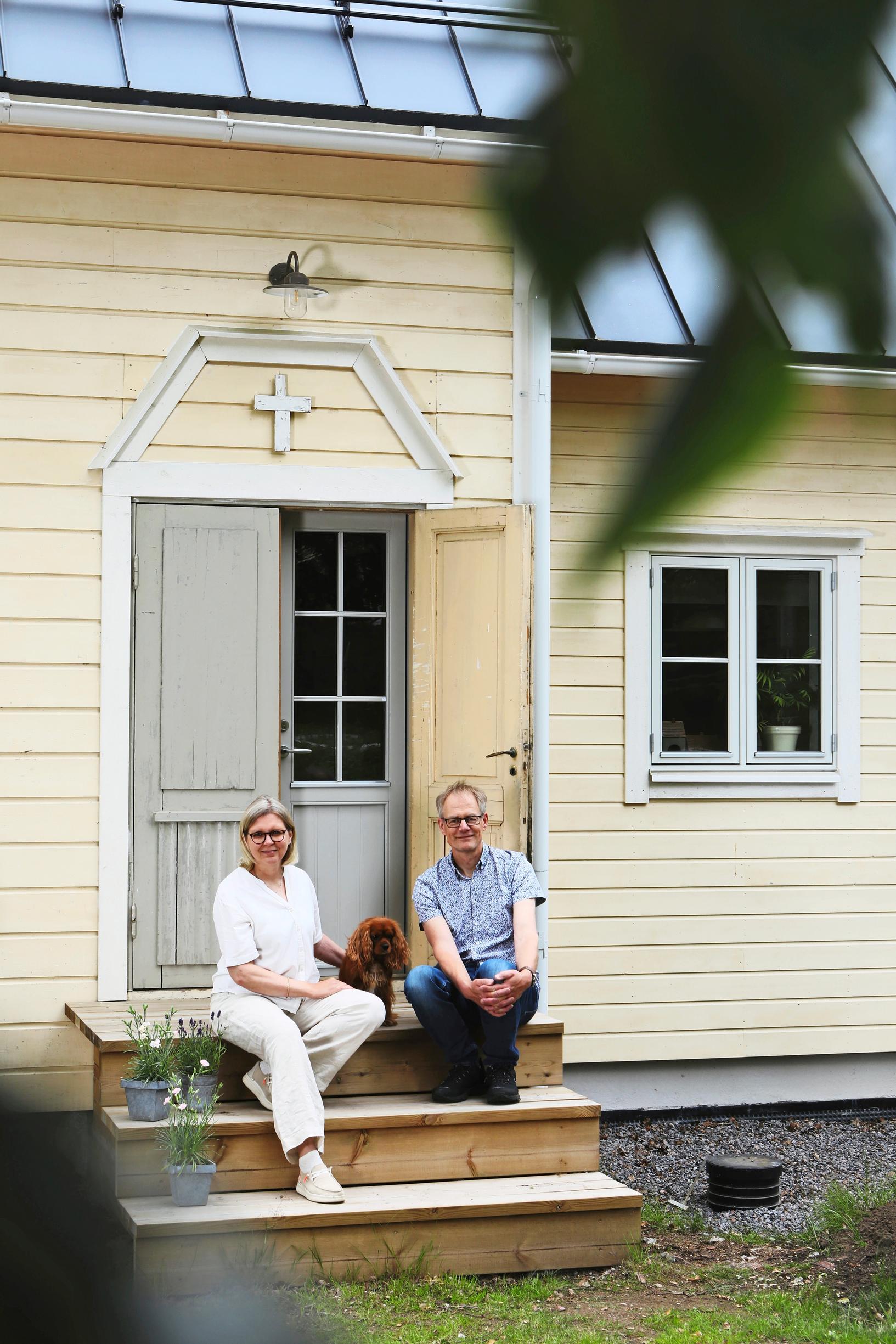
Here’s how the house looked during the extension project:
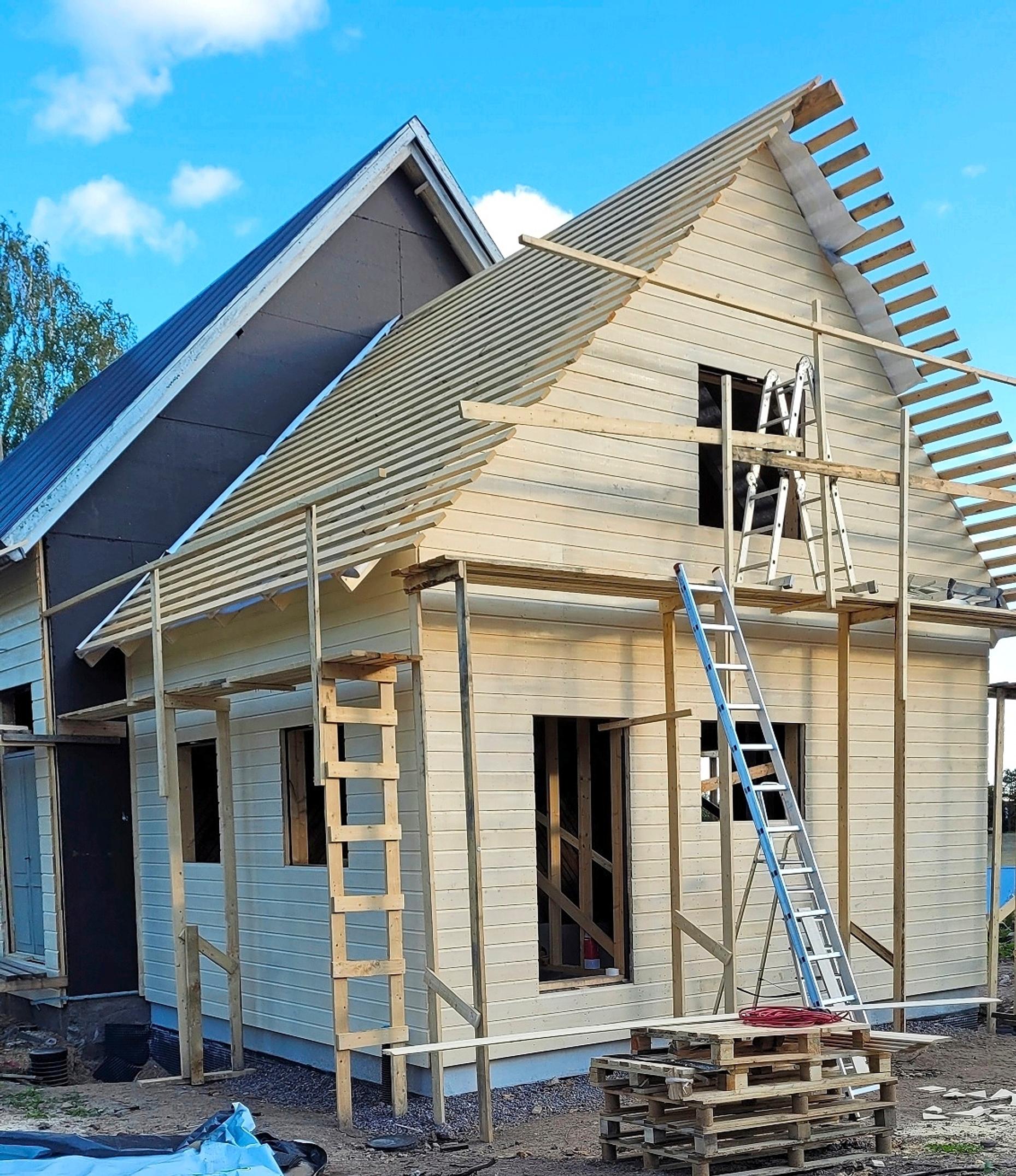
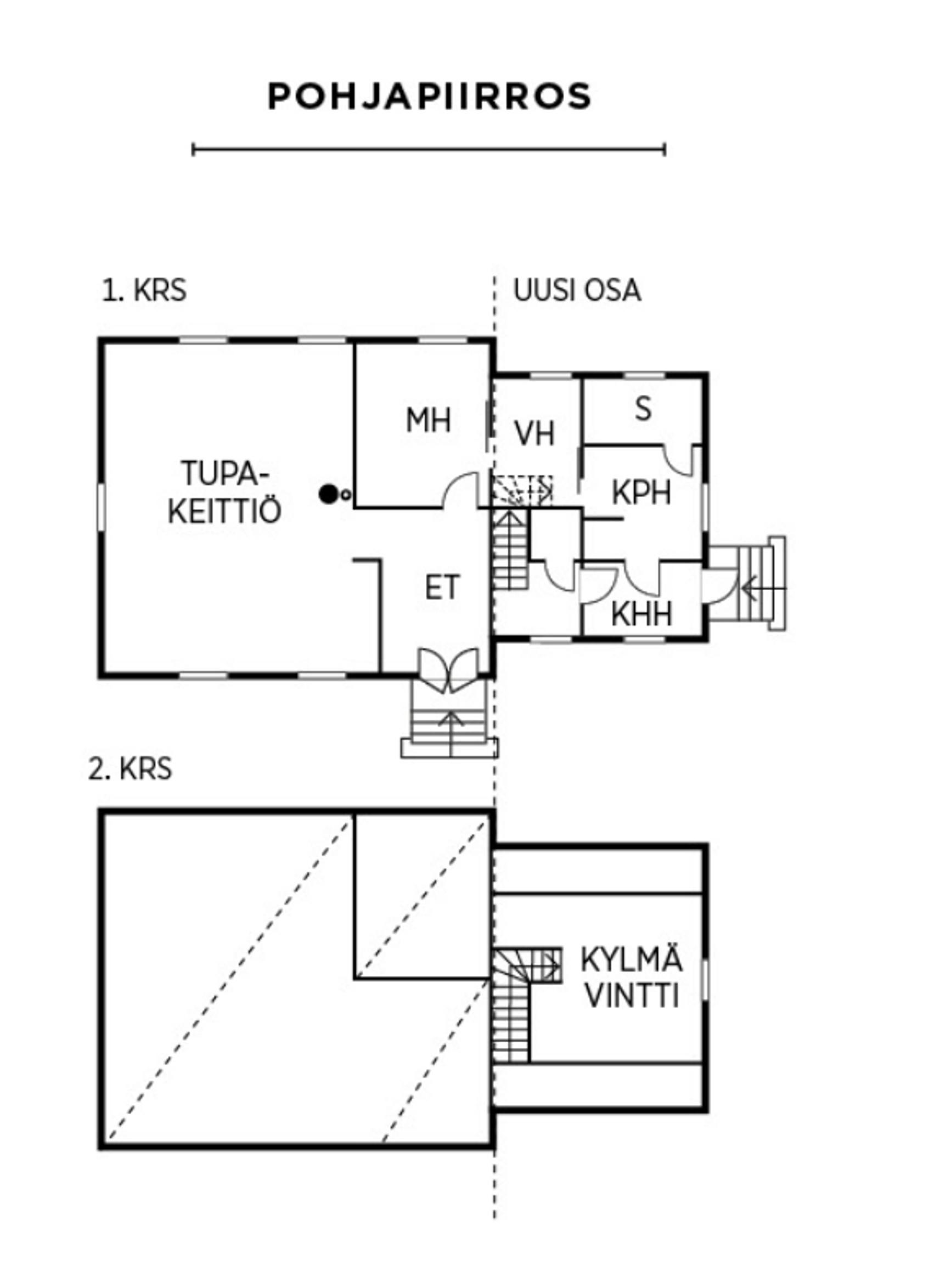
The minimalist, rectangular house brings to mind the small country churches familiar from American movies. The roof rises high, and the windows are large, as is customary in ecclesiastical buildings. The façade is protected and couldn't be altered without permission.
“First, we had to apply for a special permit since the prayerhouse wasn’t designated as a residential building.”
Outside, the Anderssons’ handiwork can be seen in the form of the extension on the gable end, lower than the main house.
“Originally, the prayerhouse had only one large space. During the renovation, we divided it into an entrance hall, open kitchen, living room, and bedroom. Additionally, we needed facilities like washrooms, which were built in the extension.”
We learned to appreciate handcrafted, unique wooden structures. It’s important to find sustainable solutions that suit an old house. With careful planning, new elements can beautifully complement the old.
The prayerhouse was completed in 1933. It was built by villagers as volunteer work. The plot was donated by a local estate owner.
“At the time the prayerhouse was built, revivalist Christianity was spreading rapidly in Finland,” Carina says.
In the 1920s, freedom of religion had come into effect. It was no longer mandatory to belong to the church.
“Seitlax Bönehus was an association without its own pastor. The prayerhouse was used by all different faiths. Its construction divided the villagers: some were for it, and some were against it.”
Carina guides us through glass doors into an atmospheric entrance hall. The floor is covered with stylish limestone tiles.
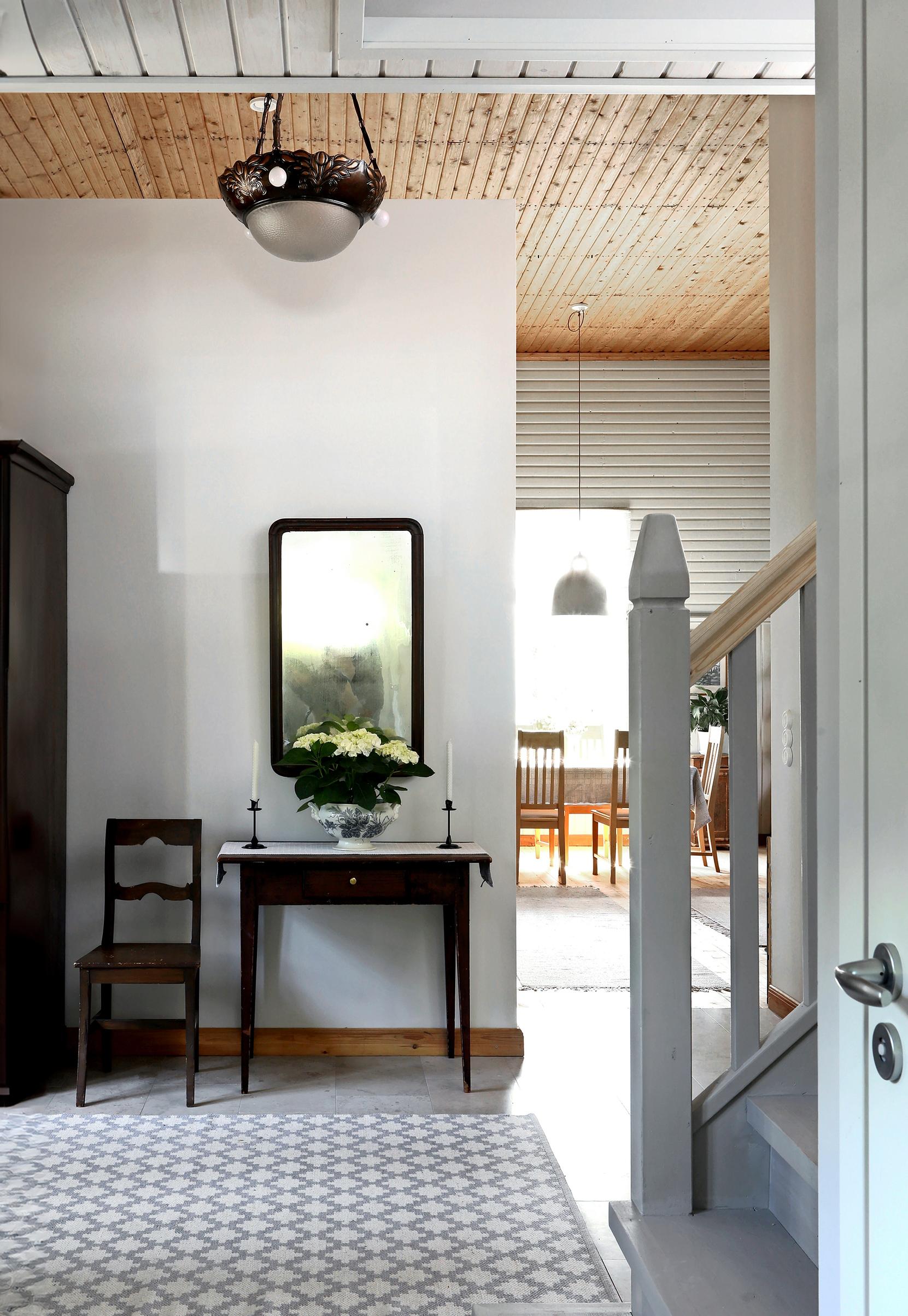
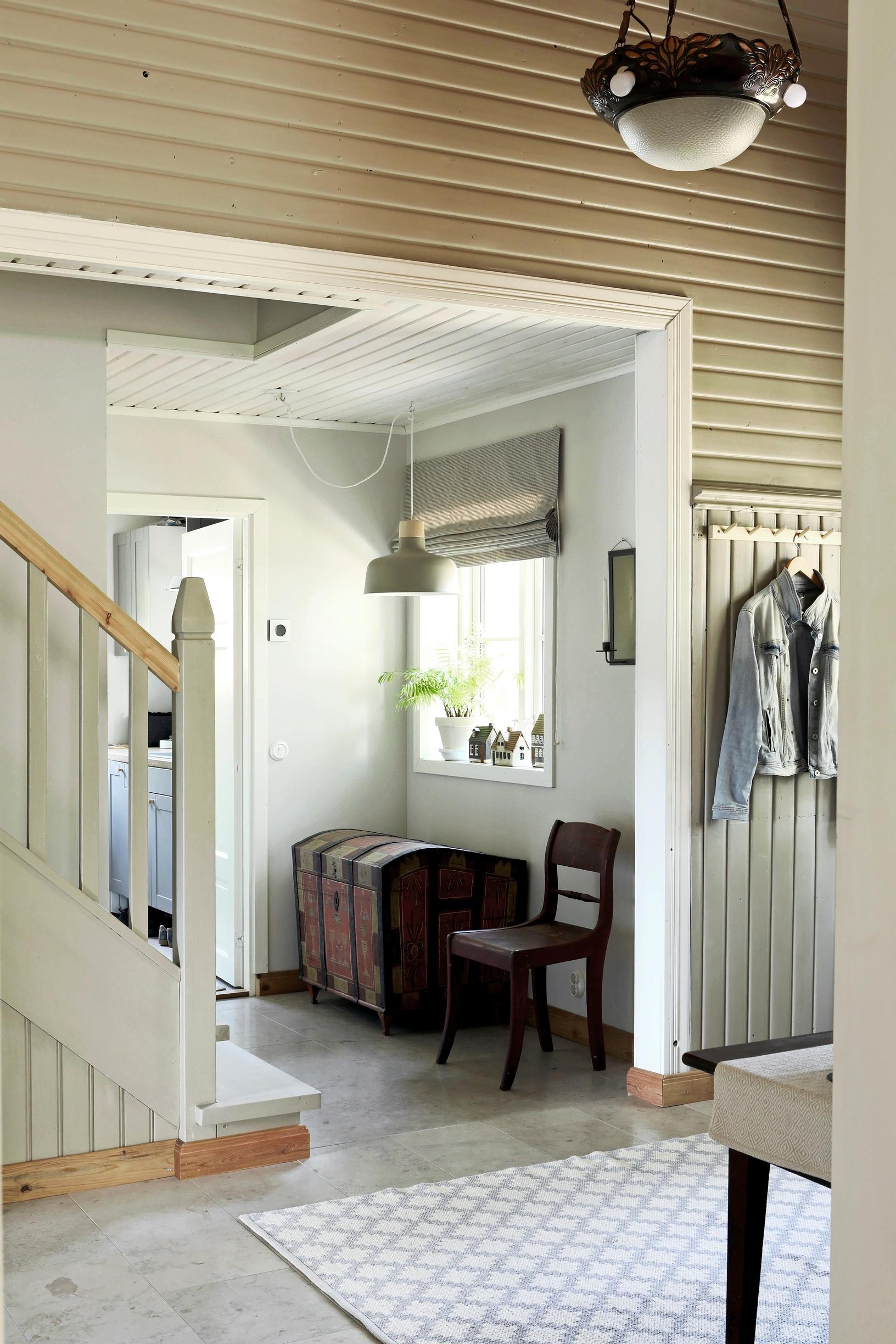
The entrance hall’s dimness gives way to light and brightness. To the left is an open kitchen, separated from the rest of the space by an island. At the end of the room is a dining area, and beneath the windows facing the garden is a comfortable sofa set. The atmosphere is cozy and inviting—it could perhaps even be described as reverent.
“Originally, there was an altar on the end wall. We’ve added a window there.”
Carina shows a photograph from the early stage of the renovation, where the altar platform still stands at the end wall. The room’s focal point is a lectern, an ambo, adorned with a cross. On either side is a simple, elegant railing separating the altar. Behind the railing peeks a harmonium.
During the renovation, the old altar and all the church pews in the space were moved for storage to a neighbor's outbuilding.
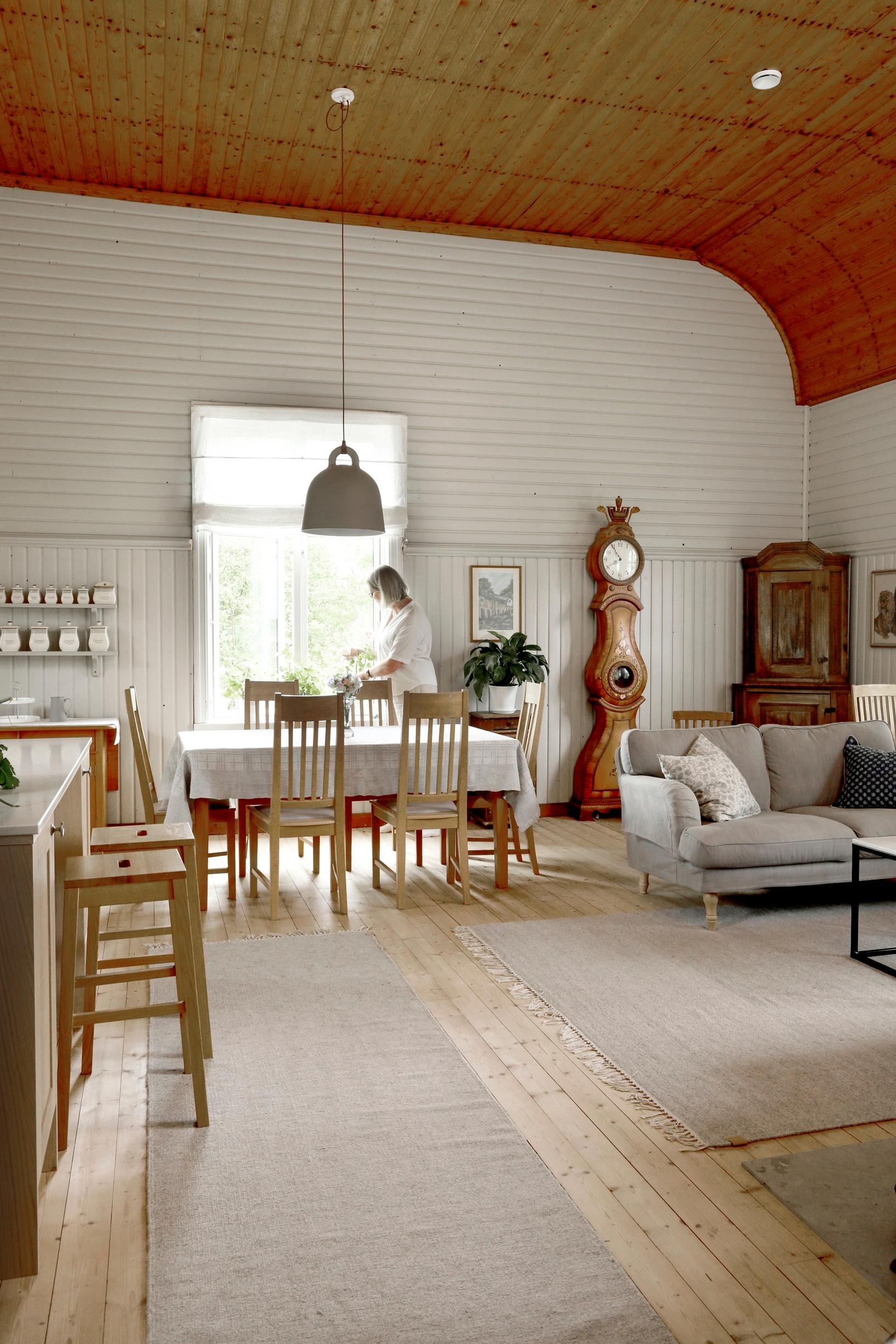
This is how it looked inside before the renovation:
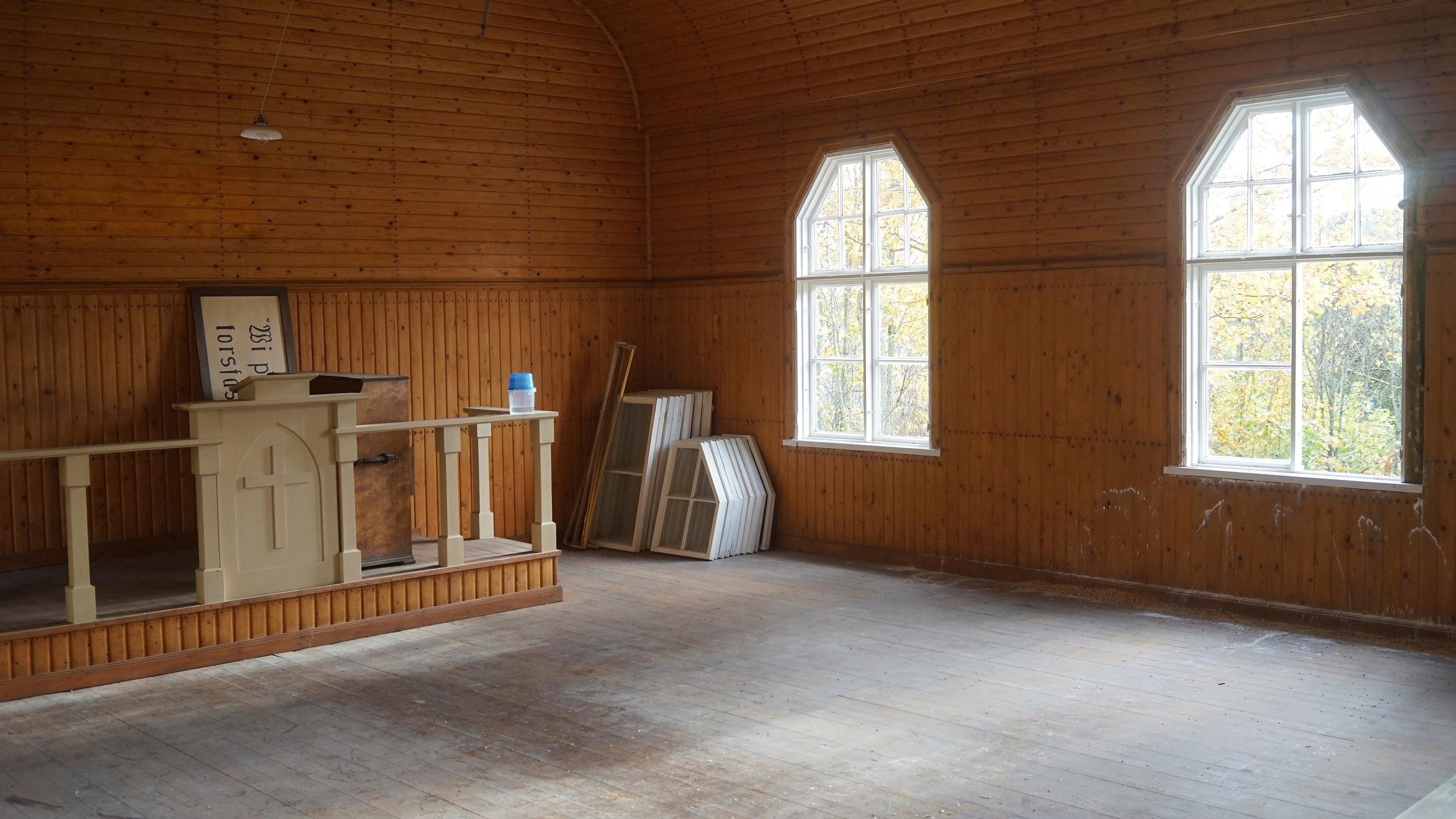
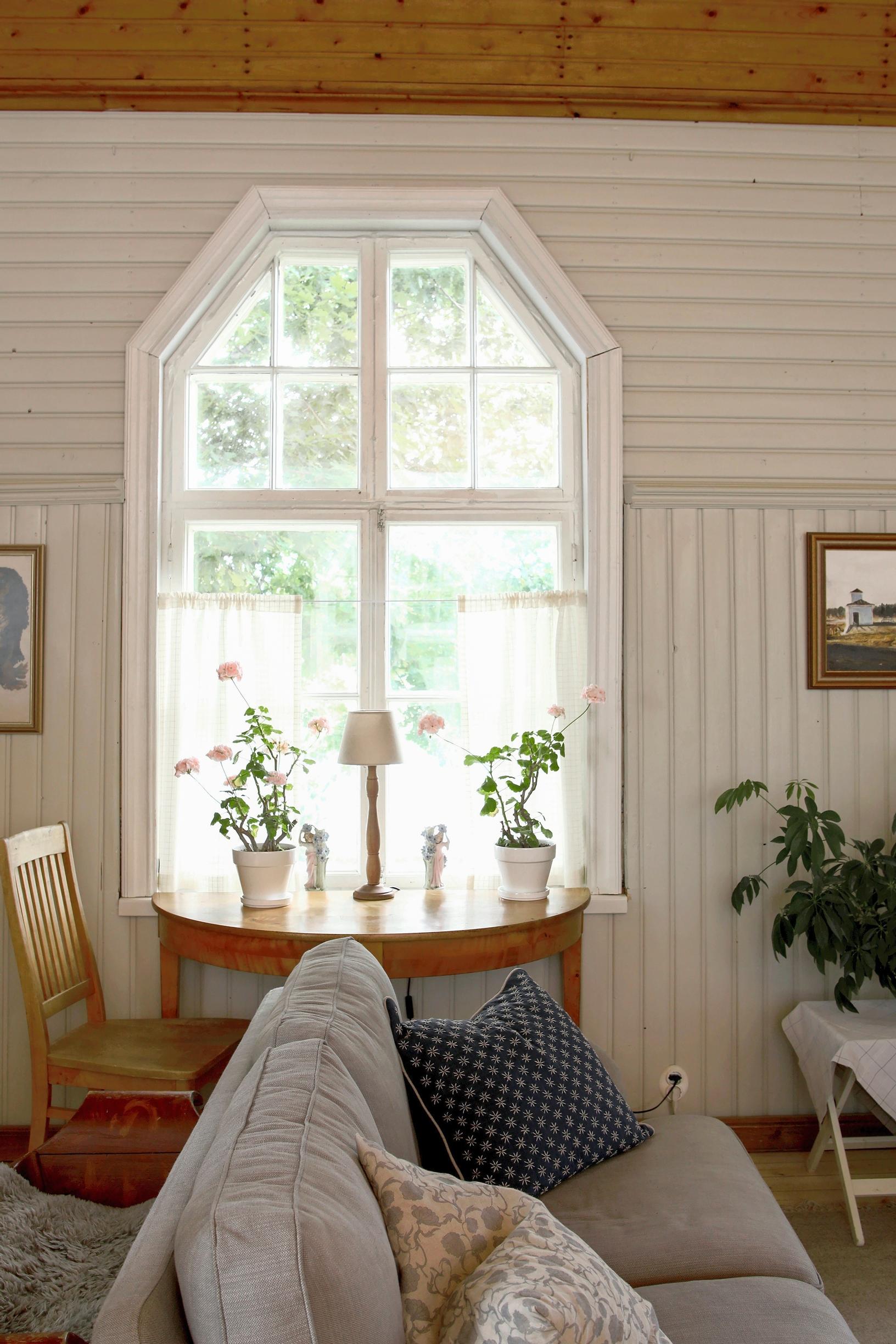
The building was transferred to the Andersson family in 2021.
“We spent the first year planning. The second year, we renovated and built the extension. The entire prayerhouse was gone through from the roof ridge to the foundations. The house was connected to the water and sewer network. All the electrics were renewed.”
The house had mostly been kept unheated.
“Inside, there was the smell of an empty house. The goal of the renovation was to create a functional home while retaining the original ambiance.”
The extension was founded on a concrete slab. The ensemble of sauna, bathroom, utility room, and walk-in closet was built with a stud frame.
Carina and Roger didn't want to alter the original paneling of the walls and interior ceiling.
“We applied raw linseed oil to the ceiling. The walls were painted umber gray with linseed oil paint.”
They also wanted to preserve the original floor. The old planks were lifted up. Underneath, they found dry sawdust insulation and a well-preserved subfloor.
"The insulation was replaced with wood fiber, on top of which the underfloor heating pipes were installed. Now the house is heated with geothermal energy."
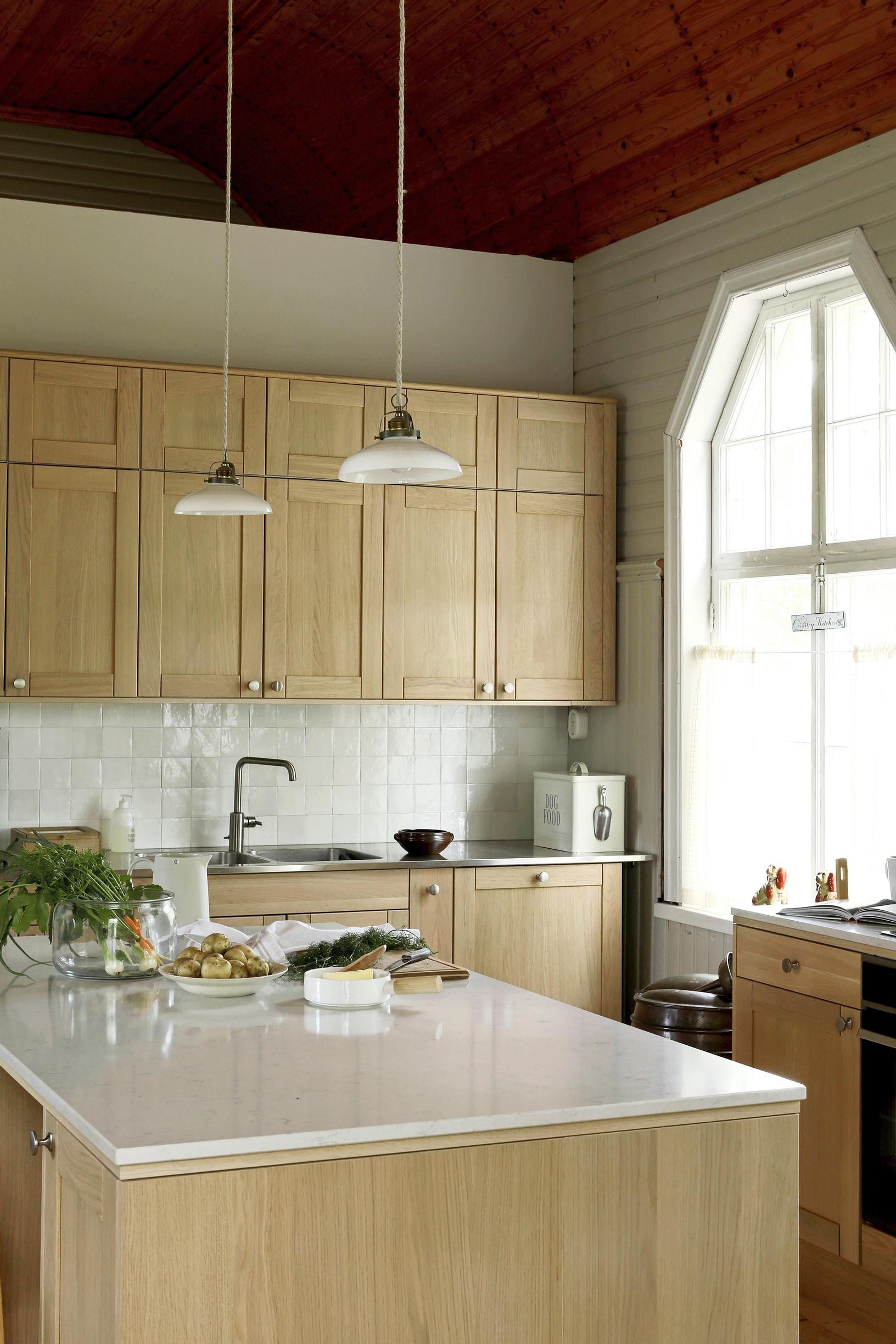
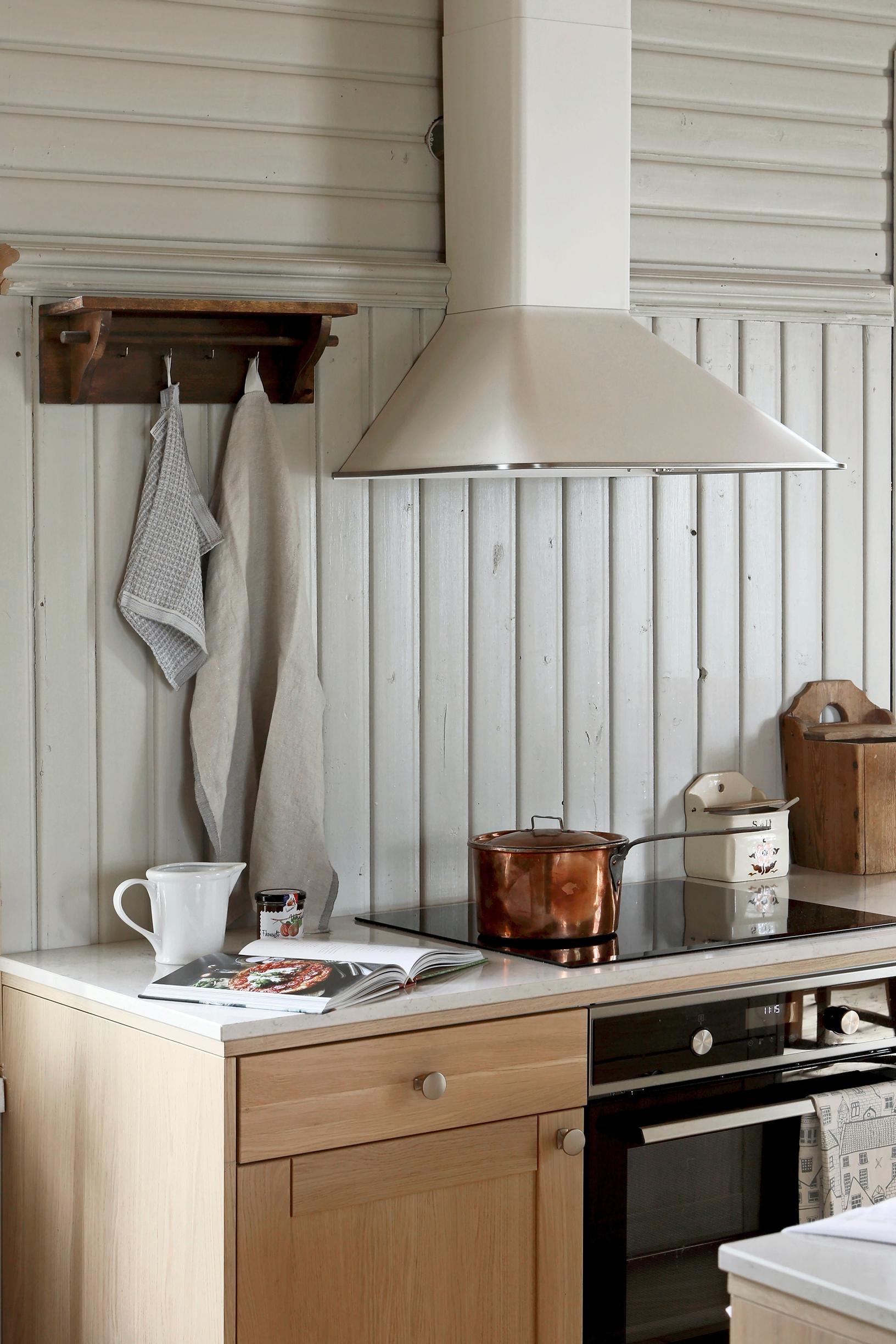
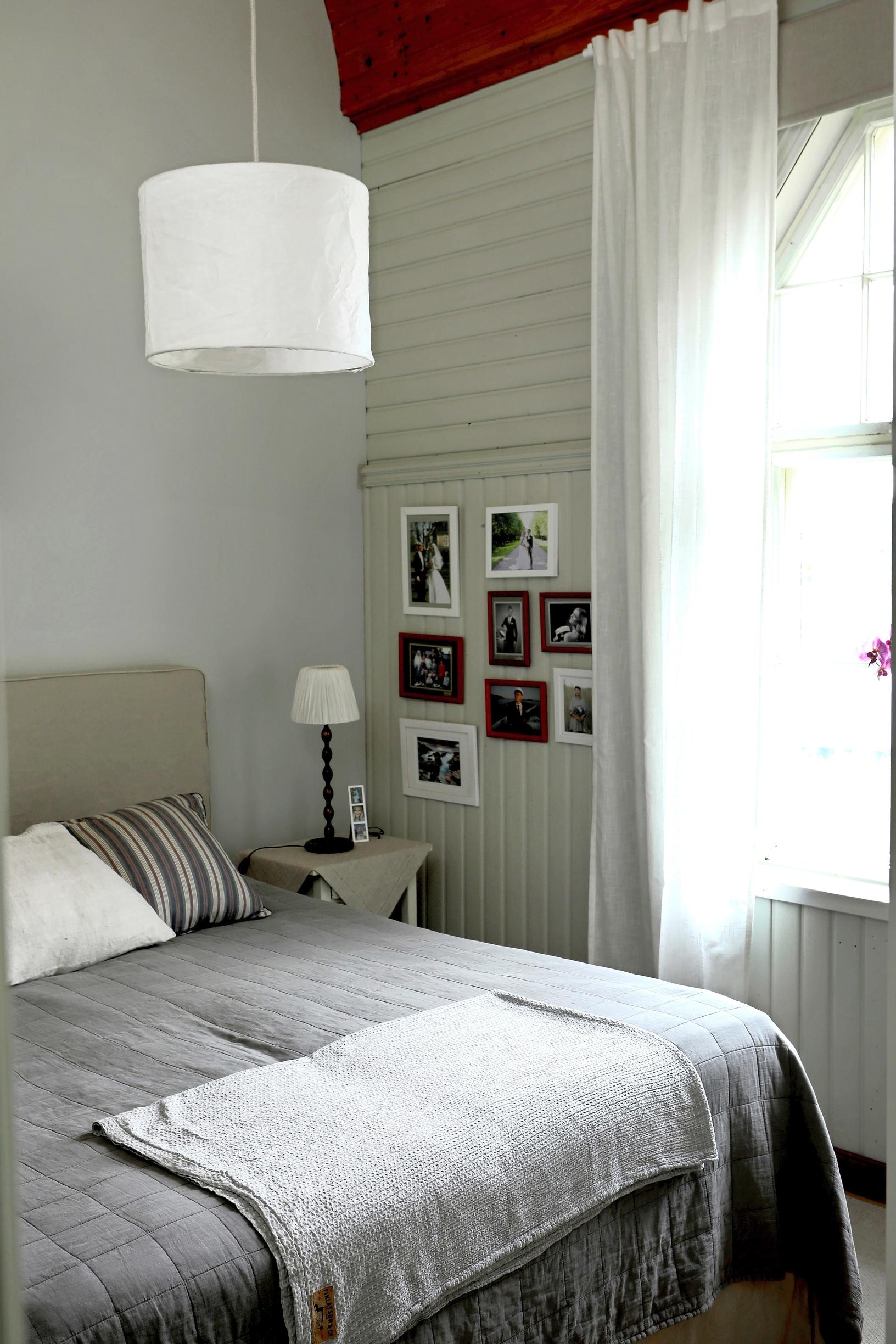
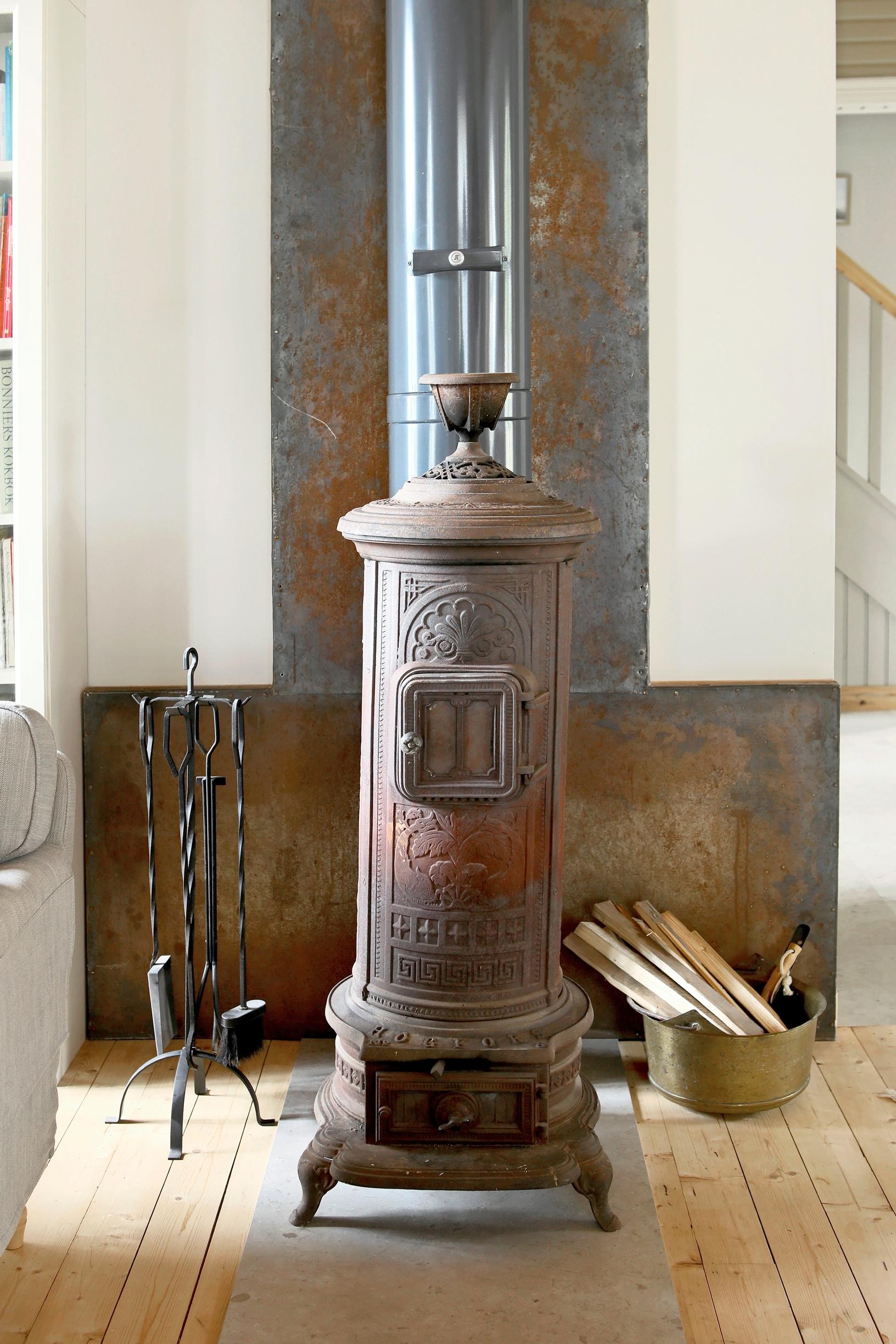
The floorboards were sanded clean of paint and, after installation, finished with soap. The additional insulation of the walls and ceiling was done from the outside and the attic.
The entire old exterior cladding was dismantled. During this, they discovered that the bottom beam against the concrete foundation had partially rotted and needed replacement. The sawdust insulation of the stud-framed house was replaced with Hunton wood fiber insulation boards.
A new exterior cladding was installed, leaving a ventilation gap. Finally, the façades received a fresh linseed oil paint finish.
The corrugated metal roof was replaced with a standing seam metal model.
“Originally, the building’s roof had been shingle, onto which roofing felt had been installed at some point.”
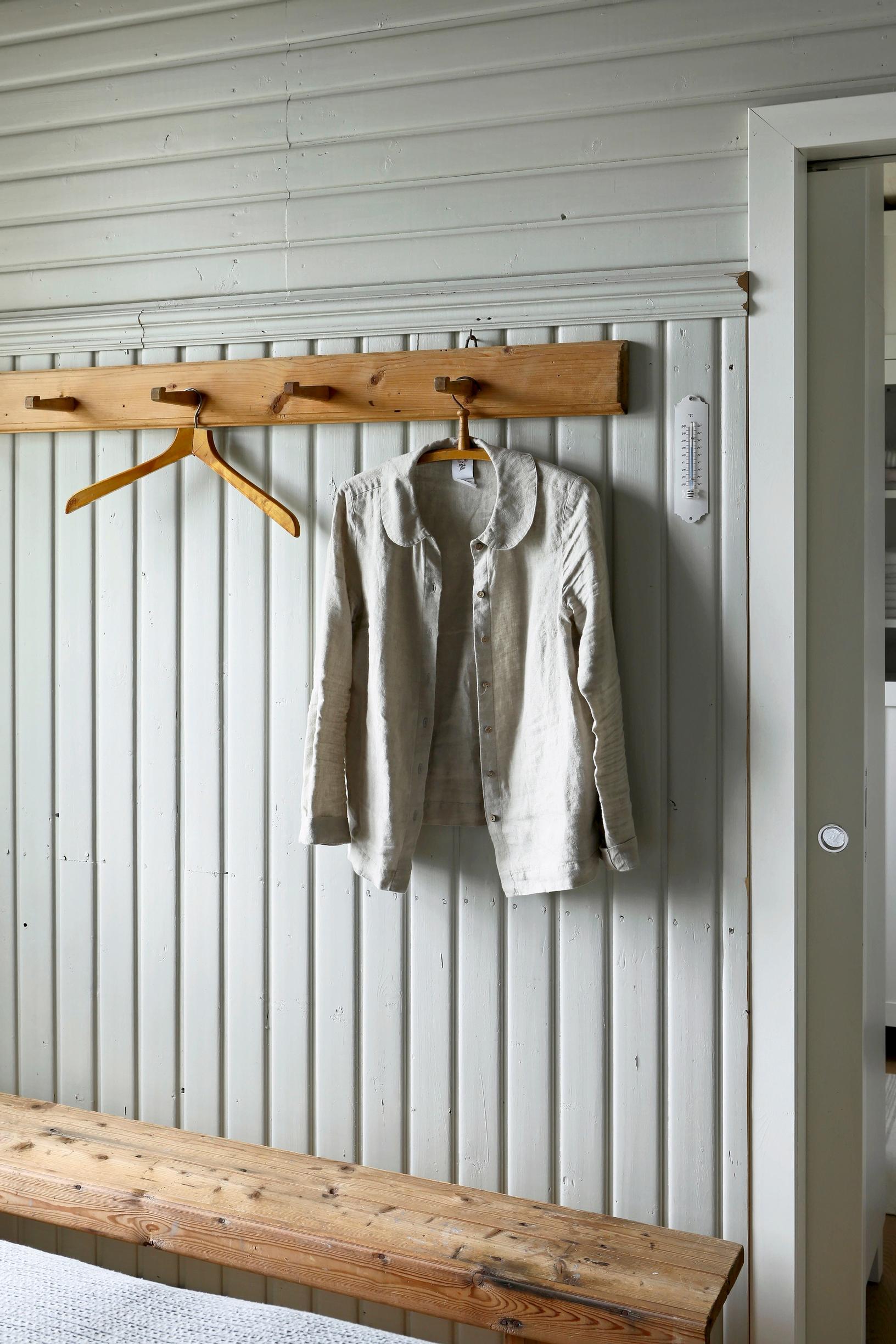
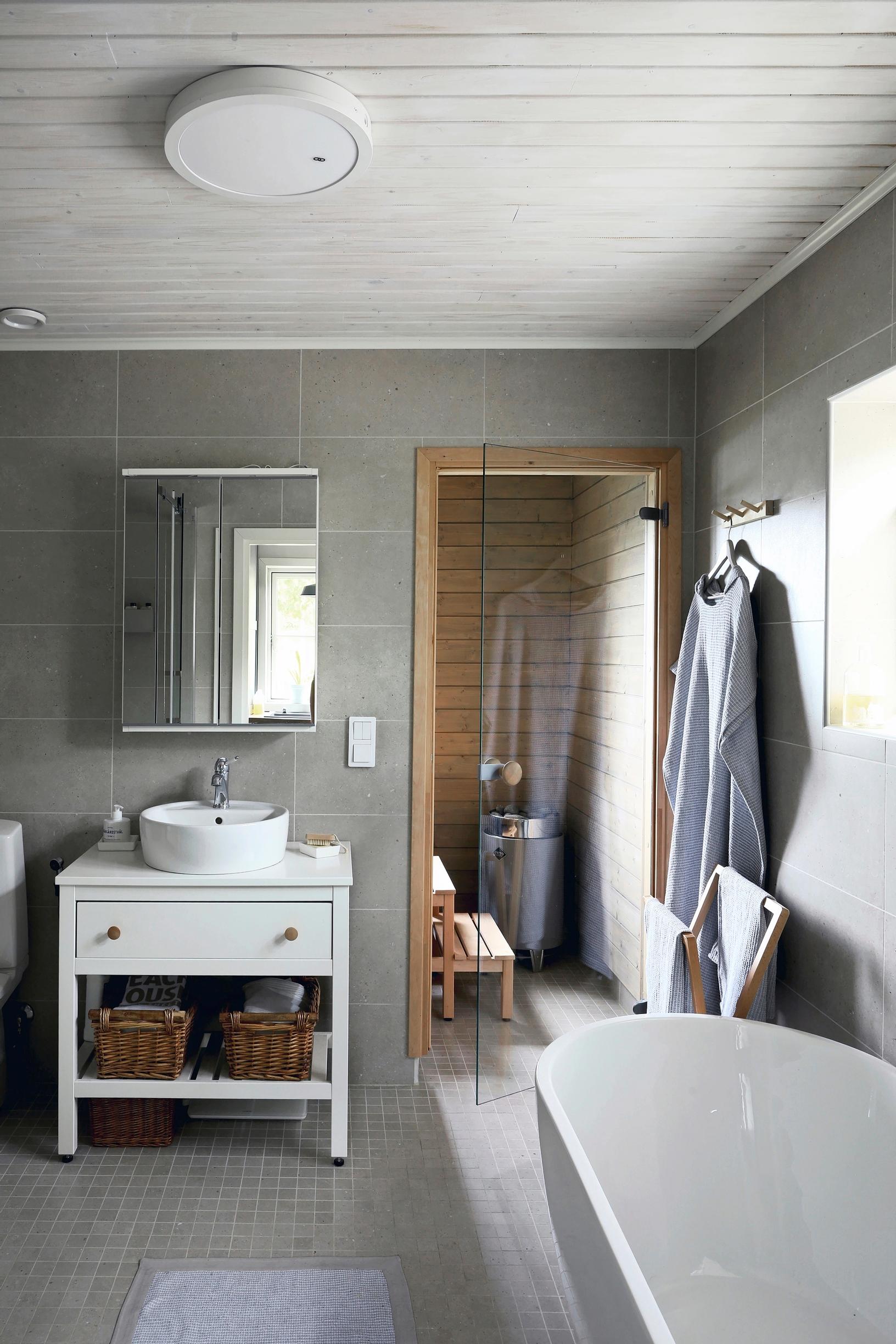
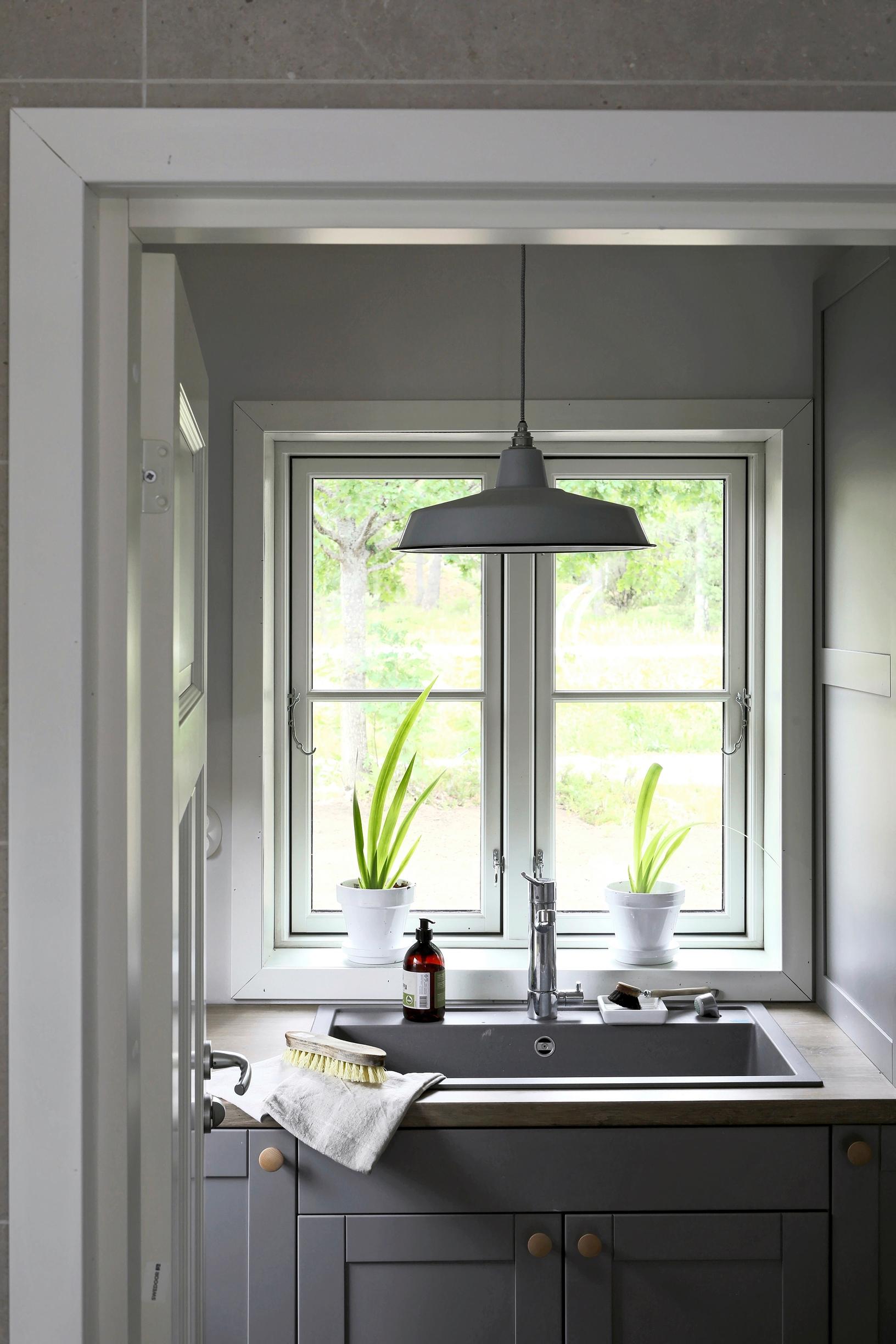
The new residents of the prayerhouse have been warmly welcomed in the village. Carina mentions an old newspaper article about the prayerhouse.
“The article mentioned that the house’s plans included a small extension, but it was never built. That extension would have been a small apartment for a pastor or caretaker. We’ve laughed together that now, after 90 years, the prayerhouse has received an extension and, for the first time, its own caretaker and pastor.”


